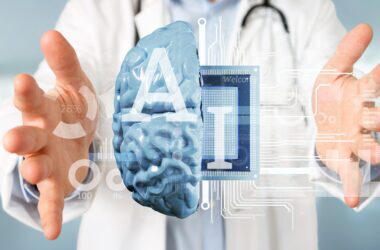Dr. William Osler’s famous quote, “The future of medicine is not in more and more expensive drugs, but in preventing illness,” aptly captures the healthcare community’s ongoing pursuit of preventative measures. But what if we could not just prevent illness but also revolutionize how we treat it altogether? Enter quantum computing, a groundbreaking technology with the potential to transform drug discovery and bring in a new era of personalized medicine. However, quantum computing in drug discovery is just the beginning; it can potentially be applied to various areas to take patient care to new heights. This blog explains how quantum computing is poised to disrupt the traditional drug discovery process.
Global healthcare communities are actively exploring the potential of quantum computing, particularly its ability to accelerate the drug discovery process. Traditionally, this process is a long and expensive endeavor, often taking a decade or more to bring a new drug to market. Quantum computing offers a potential solution by accelerating the discovery and development of life-saving medications.
Outlining The Difference – Traditional vs. Quantum Computing
How does this technology differ from the traditional computing methods we’ve relied on for decades?
Traditional computers function on a binary system, harnessing bits (0s and 1s) as the fundamental information units. These bits operate in a deterministic manner, meaning each bit can only be in one state at a time – either 0 or 1. This binary approach allows computers to perform complex calculations with remarkable speed and accuracy. However, this efficiency slows down considerably when dealing with highly intricate problems involving a vast number of variables.
Quantum computing takes a different approach, leveraging the principles of quantum mechanics. Here’s where the real distinction lies:
Superposition
Unlike bits, qubits (the building blocks of quantum computers) can exist in a state of superposition. Imagine a coin spinning in the air, simultaneously heads and tails until it lands. Similarly, a qubit can hold both 0 and 1 values concurrently, exponentially increasing its information capacity. This allows quantum computers to explore multiple possibilities simultaneously, significantly accelerating computations compared to traditional methods.
Entanglement
Another unique feature is entanglement, where two qubits become linked, sharing a single fate regardless of physical separation. Manipulating one entangled qubit instantly influences the other, enabling faster processing of complex problems.
Decoherence
However, qubits are susceptible to decoherence, a process where they lose their quantum state due to interaction with the environment. Maintaining qubit stability and minimizing decoherence remains a significant challenge in quantum computing research.
The inherent probabilistic nature of quantum computing aligns well with biological systems within the human body. Unlike traditional computing, which takes a binary approach, quantum mechanics embraces the continuous nature of biological processes. This potential synergy makes quantum computing a robust tool for modeling complex biological phenomena and ultimately accelerating drug discovery efforts.
By understanding these key distinctions between traditional and quantum computing, we can appreciate the transformative potential quantum technology holds for the future of healthcare.
A Quantum Leap In Biomedical Research
As of today, a landmark achievement in healthcare research continues to bear fruit. In 2023, IBM deployed the first on-site, private-sector quantum computer managed by IBM in the United States at the Cleveland Clinic. This groundbreaking initiative marked the invention of the first-of-its-kind quantum computer dedicated specifically to healthcare research. This partnership focuses on leveraging high-performance computing, artificial intelligence, and quantum computing to accelerate the pace of biomedical research. Here are the three key pillars of how quantum computing is being applied in the industry:
Quantum Simulations
At the heart of drug discovery lies understanding how molecules interact with each other. Traditional computers struggle to simulate these interactions for complex molecules with many atoms. However, quantum simulations allow researchers to transform a chemical formula into a 3D structure and analyze its behavior at an atomic level. This opens doors to the simulation of structures previously impossible with traditional computing, leading to the development of more targeted and effective drugs.
Machine Learning
The vast amount of data generated by quantum simulations can be overwhelming. Here’s where machine learning comes in. By implementing machine learning algorithms to this data, researchers can identify patterns and trends, accelerating the drug discovery process significantly. Imagine sifting through a large volume of data in seconds, pinpointing potential drug candidates with remarkable accuracy.
Quantum Optimization
Developing new drugs often involves finding the optimal configuration for a molecule to interact with a specific target, such as a disease-causing protein. Quantum optimization algorithms excel at solving complex optimization problems. This makes them ideal for identifying the ideal structure for a drug molecule, potentially leading to highly targeted therapies with minimal side effects.
Building The Foundation For Quantum Success
While the potential of quantum computing in drug discovery is undeniable, it requires a robust infrastructure to unlock its full potential. Leading experts in the field believe that there are three key elements that help in building the foundation for quantum success:
- High-Performance Quantum Computing: Quantum computing functions best alongside powerful HPC systems for data processing and analysis.
- Hybrid Cloud Infrastructure: A secure and scalable cloud environment is crucial to manage the vast amount of data generated by quantum simulations.
- Workforce Development: Upskilling existing healthcare informatics teams is vital to operate and utilize this complex technology effectively.
A Quantum Future For Healthcare
The integration of quantum computing in drug discovery is still in its early stages, but the potential is undeniable. Continued advancements in quantum hardware and software, combined with a skilled workforce, will pave the way for a new era of personalized medicine.
The future of healthcare is set with radical possibilities. Quantum computing promises a future where drug discovery is faster, more efficient, and more targeted, thus taking personalized healthcare to new heights. This possibility can translate to better patient outcomes, enriched quality of life, and a healthier world in days to come.
[Previous Blog: The AI Revolution In Healthcare Claims Processing]













